Difference Between Software Testing and Quality Assurance
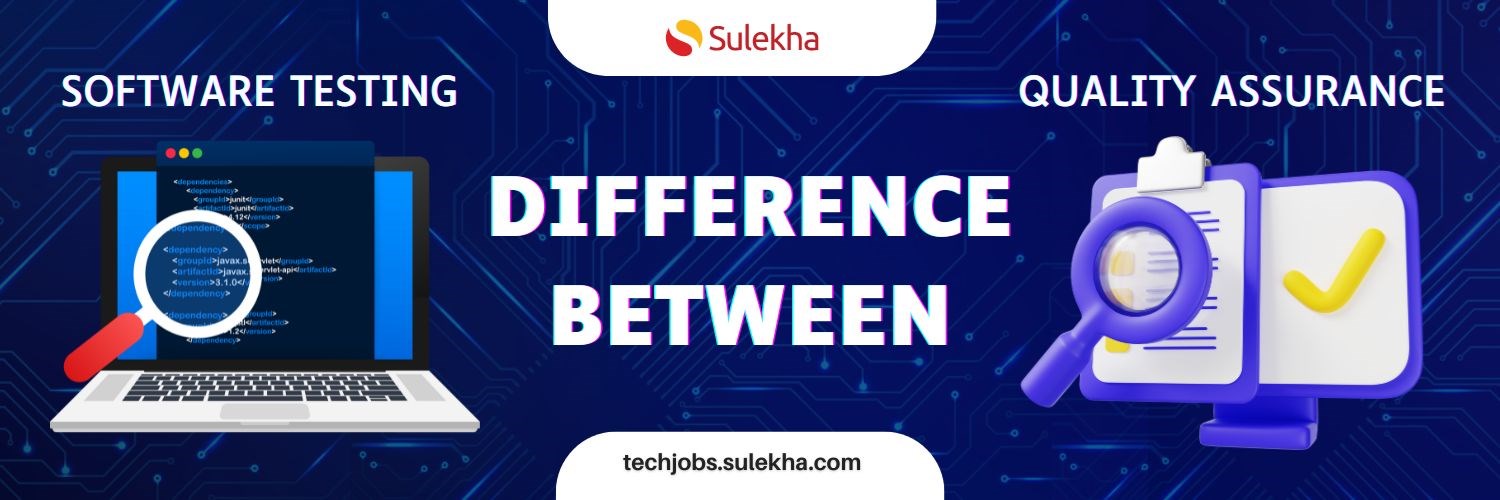
Difference Between Software Testing and Quality Assurance
In the fast-paced world of software development, ensuring a product's quality is paramount. However, within this realm lies a slight confusion of terminology: software testing vs. quality assurance (QA). While they work hand-in-hand, they're different. Let's break down crucial software testing and quality assurance concepts and their differentiation.
According to LinkedIn, the global Software Testing market size was valued at USD 87425.55 million in 2024 and is expected to expand at a CAGR of 21.71% during the forecast period, reaching USD 284155.08 million by 2027.6 Feb 2024.
According to LinkedIn, the Global Software Quality Assurance market size was valued at USD 1772.81 million in 2024 and is expected to expand at a CAGR of 14.47% during the forecast period, reaching USD 3989.57 million by 2031."
So, Pursuing a career in Software Testing or Quality Assurance can benefit your career by offering high demand, growth opportunities, diverse job prospects, and competitive salaries, while obtaining certifications like ISTQB, CSQA, or CAST can enhance your job prospects in top companies by showcasing your expertise and commitment to professional development in the field.
What is Software testing?
Software testing evaluates a product to identify bugs, errors, or deviations from its intended functionality. It's a quality check to ensure the software performs as expected and delivers a positive user experience.
What is Quality Assurance
Quality Assurance (QA) is a process that ensures that a product or service meets specified quality standards. It involves systematic monitoring and evaluation of the various aspects of a project or product to ensure that it meets the desired quality criteria. QA aims to prevent defects and errors in the development process and to ensure that the final product meets customer expectations. It typically involves testing, inspection, and review to identify and address issues before releasing the product.
Difference Between Software tester and QA engineer
Software Testing:
Description: Involves executing software to identify defects and ensure it meets requirements.
Quality Assurance (QA):
Description: Focuses on creating and maintaining processes to prevent defects and ensure high-quality output.
Objective:
Software Testing: Identifying and resolving errors in software products.
Quality Assurance: Preventing errors from entering the software by setting quality standards.
Focus:
Software Testing: Error detection and system control after software development.
Quality Assurance: Ensures defects aren't introduced, and requirements are met from the beginning.
Activities:
Software Testing: Includes unit testing, integration testing, system testing, and regression testing.
Quality Assurance: Involves setting code standards, code reviews, and defining processes.
Outcome:
Software Testing: Identifying and resolving errors or defects in the software.
Quality Assurance: Preventing errors from entering the software and ensuring high-quality code is shipped.
Software Tester vs QA Engineer:
Responsibility:
Software Tester
A Software Tester is responsible for identifying defects in software products through testing and ensuring they meet quality standards.
QA Engineer
Quality Assurance professionals focus on preventing defects by setting quality standards, optimizing processes, and ensuring high-quality output throughout the software development lifecycle.
Skills
Software Tester:
· Technical: Master of test methods (functional, usability ,etc.) and automation tools to find bugs efficiently.
· Soft Skills: Analytical thinker with a keen eye for detail who can communicate test findings.
QA Engineer:
1. Technical: Proficiency in test automation tools and scripting languages to create automated test scripts.
2. Soft Skills: Strong problem-solving skills to identify and troubleshoot issues in the software effectively.
Role in the Development Process
· Software Testing Role: Software testing verifies software functionality, identifies bugs, and ensures quality standards are met during development.
· Quality Assurance Role: Quality Assurance (QA) focuses on setting quality standards, testing software against requirements, and ensuring the end product meets user expectations and industry standards.
Collaboration with other teams
· Collaboration for Software Testing: Software testers collaborate with developers to understand requirements, report bugs, and ensure software meets quality standards before release.
· Collaboration for Quality Assurance: Quality Assurance professionals collaborate with various teams to establish quality processes, conduct audits, and ensure adherence to quality standards throughout the software development lifecycle.
Now, we shall discuss types of software testing and Quality Assurance Testing in detail.
Software Testing
The different types of software testing include:
1. Unit Testing: Focuses on verifying the correctness of individual code units, such as functions or classes.
2. Integration Testing: Ensures that different modules or services work together as intended.
3. System Testing: Validates the entire system to meet requirements.
4. Acceptance Testing: Confirms system acceptability by end users.
5. Non-Functional Testing:
Includes:
· Performance Testing: Evaluates behavior under expected workloads.
· Security Testing: Identifies vulnerabilities compromising security.
· Usability Testing: Evaluates ease of use from a user perspective.
· Compatibility Testing: Validates working across environments.
6. Other Software Testing Types: Such as Ad-hoc Testing, Back-end Testing, Regression Testing, Mobile App Testing, API Testing, and Automated Testing.
These testing types ensure software quality, functionality, and reliability throughout the development lifecycle.
Tools used by the Software tester:
1. Selenium
2. JIRA
3. Postman
4. Jenkins
5. LoadRunner
These are just a few examples of the many tools available to software testers. The choice of tools may vary depending on the project's specific requirements, the type of testing being performed, and the preferences of the testing team.
Types of Quality Assurance Testing
· Smoke Testing is a straightforward evaluation to check if the code was built correctly. It is typically the first test performed on new software.
· Functional Testing: Ensures that each outlined software requirement works as intended, testing features like submission forms and page layouts.
· Integration Testing: Verifies that components integrate and function together correctly on a site, focusing on elements like fonts and images.
· Regression Testing confirms that recent code changes do not negatively impact existing software features. It is typically a candidate for automation due to its repetitive nature.
· Exploratory Testing: Involves exploring a site without specific goals, looking for visual bugs or coding errors by interacting with the site in various ways.
· User Acceptance Testing: The final step before the client conducts software deployment to ensure the software meets requirements and expectations before going live.
Quality Assurance Testing tools
· Selenium
· Scandium
· Appium
· Test Complete
· Katalon Studio
Software Testing and Quality Assurance Certification:
· Quality Assurance (QA) Training Courses
· Certified Software Tester (CSTE) Training
· Software Development Life Cycle Training and Certification
Roles after completing Software Testing and Quality Assurance certification:
After completing Software Testing and Quality Assurance certification, the roles can vary depending on the specific certification and the individual's experience level. Here are some common roles associated with Software Testing and Quality Assurance:
· QA Engineer
· Test Analyst
· QA Lead
· QA Manager
· Test Architect
Salary of a Software tester and Quality assurance
The average annual salary for a Quality Assurance Tester in the United States, as reported by Glassdoor, is $75,222. Additionally, QA Testers in the U.S. receive an average of $5,059 in extra cash compensation, ranging from $3,794 to $7,082. These salary figures are derived from 2096 anonymous submissions by QA Tester employees in the United States to Glassdoor.
Software tester:
According to Glassdoor, the Total Pay Estimate for a Software Tester in the United States is approximately $106,366 annually, with an average base salary of $84,114 annually. These figures reflect the median point of the salary ranges determined by our exclusive Total Pay Estimate model, compiled from user-reported salaries. An additional estimated $22,252 annually is provided in supplementary pay for this role.
In conclusion, Software testing focuses on identifying defects, while quality assurance (QA) aims to prevent them through process improvement. Both are crucial for delivering high-quality software. Certification in either field can enhance skills, credibility, and career prospects.
Find a course provider to learn QA
Java training | J2EE training | J2EE Jboss training | Apache JMeter trainingTake the next step towards your professional goals in QA
Don't hesitate to talk with our course advisor right now
Receive a call
Contact NowMake a call
+1-732-338-7323Take our FREE Skill Assessment Test to discover your strengths and earn a certificate upon completion.
Enroll for the next batch
qa certification courses
- Dec 15 2025
- Online
qa certification courses
- Dec 16 2025
- Online
qa certification courses
- Dec 17 2025
- Online
qa certification courses
- Dec 18 2025
- Online
qa certification courses
- Dec 19 2025
- Online
Related blogs on QA to learn more

How to become a QA tester? Skills, Requirements, and Jobs in 2023
Learn how to become a QA tester and how to excel in this dynamic career and ensure high-quality software products.

How to Become a QA Tester
Embark on an exciting journey to learn to be a QA tester and unlock endless possibilities in the dynamic world of software testing. QA testing is an emerging and demanding career path for freshers and professionals who intend to get into the softw
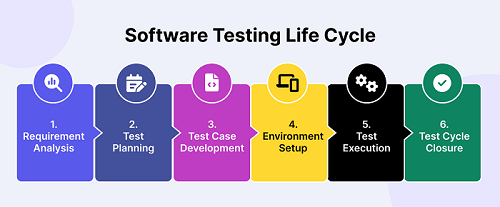
The Innovation behind QA Testing – Important Steps for Tech Deployment
Introduction QA testing

The Innovation behind QA Testing – Important Steps for Tech Deployment
Quality assurance (QA) has always been essential in ensuring that products released onto the market meet certain standards and are reliable. With so much focus on the internet and digital technology, it is no surprise that products incorporating thes

ISTQB Foundation Level Mock Test Sample Questions with Answers
We have prepared ISTQB foundation level certification exam self study and practice test sample questions answers to evaluate your skills to clear the foundation level. We have collected a list of istqb foundation level previous question papers with a
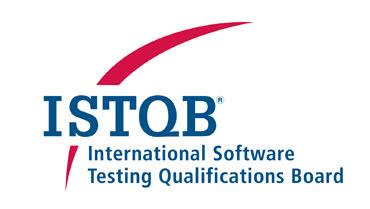
ISTQB Sample Questions and Answers to practice for Passing Score
ISTQB Certification exam question and answers - Get benefited with ISTQB agile tester exam questions and answers to check your testing ability before attending to the exam. Take advantages of these ISTQB questions online to practice and memorize the
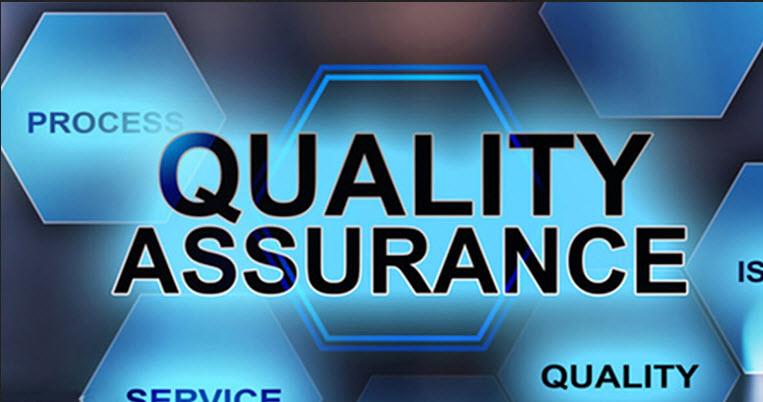
Find list of Institutions for Quality Assurance Certification Course
The motive of this content is to connect students all over the world to the best instructors; this article will help individuals to reach goals and pursue their dreams. We believe the world’s best QA teachers and training providers are found in this

Software Quality Assurance Syllabus for Beginners and Testing Professionals
Have you ever been thought of becoming a software testing professional, and wanted to know what you will learn during the training? After reading the content, you will probably have a good idea of assignments, projects, exams. This QA syllabus is des

Proven strategies to develop Quality Assurance testing!
When it comes to software quality assurance, there are plenty of things needs to be taken into account. Especially for software testing such as the type of product, development process, and different stages of the testing process, it plays a very vit

Modern Quality Assurance Technique!
As soon as the developer starts building the software, the start testing them as well. Quality assurance, of course, is a crucial part of a software development which determines the success or failure of the product in the market. But have you ever w
Latest blogs on technology to explore

From Student to AI Pro: What Does Prompt Engineering Entail and How Do You Start?
Explore the growing field of prompt engineering, a vital skill for AI enthusiasts. Learn how to craft optimized prompts for tools like ChatGPT and Gemini, and discover the career opportunities and skills needed to succeed in this fast-evolving indust
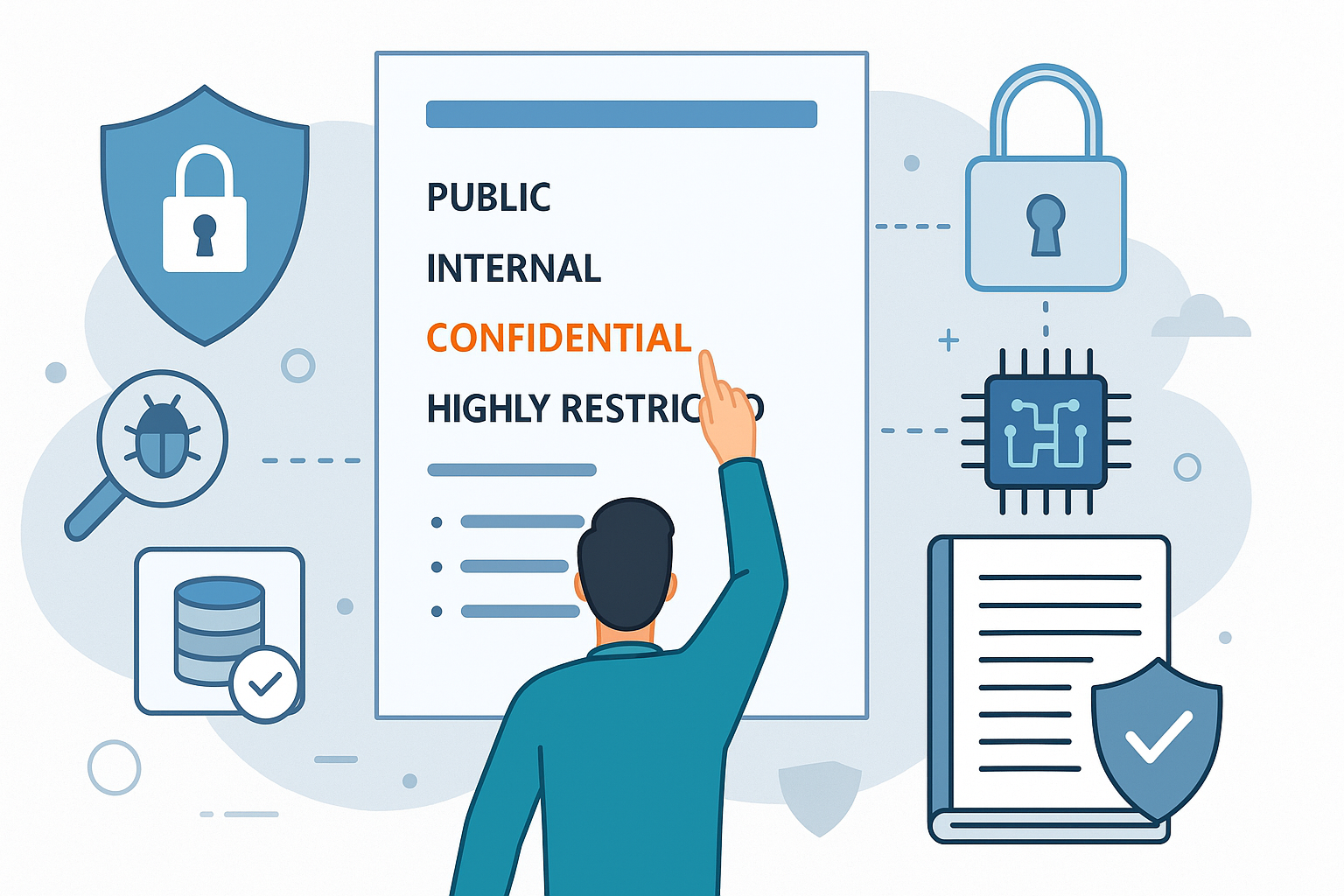
How Security Classification Guides Strengthen Data Protection in Modern Cybersecurity
A Security Classification Guide (SCG) defines data protection standards, ensuring sensitive information is handled securely across all levels. By outlining confidentiality, access controls, and declassification procedures, SCGs strengthen cybersecuri

Artificial Intelligence – A Growing Field of Study for Modern Learners
Artificial Intelligence is becoming a top study choice due to high job demand and future scope. This blog explains key subjects, career opportunities, and a simple AI study roadmap to help beginners start learning and build a strong career in the AI

Java in 2026: Why This ‘Old’ Language Is Still Your Golden Ticket to a Tech Career (And Where to Learn It!
Think Java is old news? Think again! 90% of Fortune 500 companies (yes, including Google, Amazon, and Netflix) run on Java (Oracle, 2025). From Android apps to banking systems, Java is the backbone of tech—and Sulekha IT Services is your fast track t

From Student to AI Pro: What Does Prompt Engineering Entail and How Do You Start?
Learn what prompt engineering is, why it matters, and how students and professionals can start mastering AI tools like ChatGPT, Gemini, and Copilot.

Cyber Security in 2025: The Golden Ticket to a Future-Proof Career
Cyber security jobs are growing 35% faster than any other tech field (U.S. Bureau of Labor Statistics, 2024)—and the average salary is $100,000+ per year! In a world where data breaches cost businesses $4.45 million on average (IBM, 2024), cyber secu

SAP SD in 2025: Your Ticket to a High-Flying IT Career
In the fast-paced world of IT and enterprise software, SAP SD (Sales and Distribution) is the secret sauce that keeps businesses running smoothly. Whether it’s managing customer orders, pricing, shipping, or billing, SAP SD is the backbone of sales o

SAP FICO in 2025: Salary, Jobs & How to Get Certified
AP FICO professionals earn $90,000–$130,000/year in the USA and Canada—and demand is skyrocketing! If you’re eyeing a future-proof IT career, SAP FICO (Financial Accounting & Controlling) is your golden ticket. But where do you start? Sulekha IT Serv

Train Like an AI Engineer: The Smartest Career Move You’ll Make This Year!
Why AI Engineering Is the Hottest Skillset Right Now From self-driving cars to chatbots that sound eerily human, Artificial Intelligence is no longer science fiction — it’s the backbone of modern tech. And guess what? Companies across the USA and Can
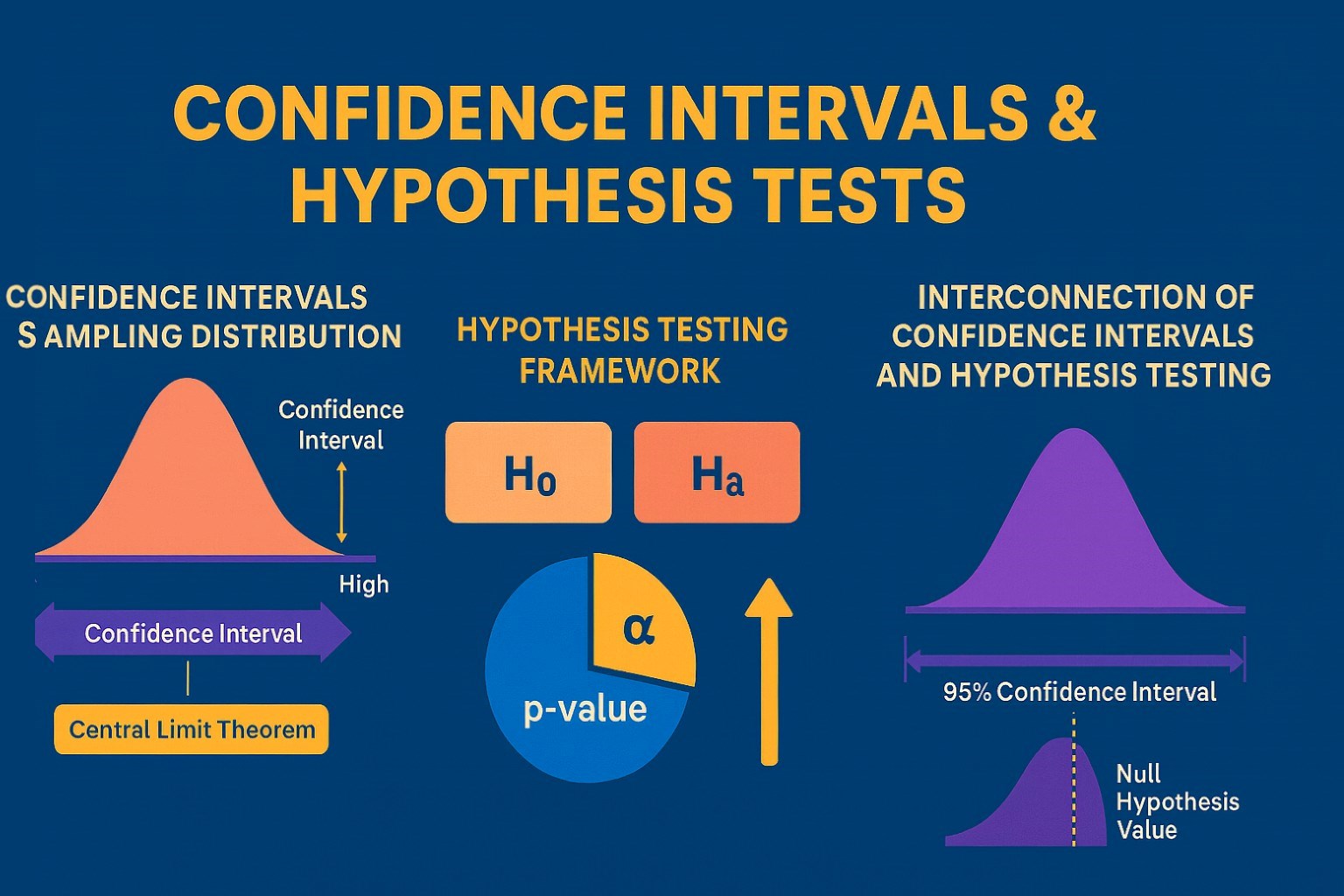
Confidence Intervals & Hypothesis Tests: The Data Science Path to Generalization
Learn how confidence intervals and hypothesis tests turn sample data into reliable population insights in data science. Understand CLT, p-values, and significance to generalize results, quantify uncertainty, and make evidence-based decisions.